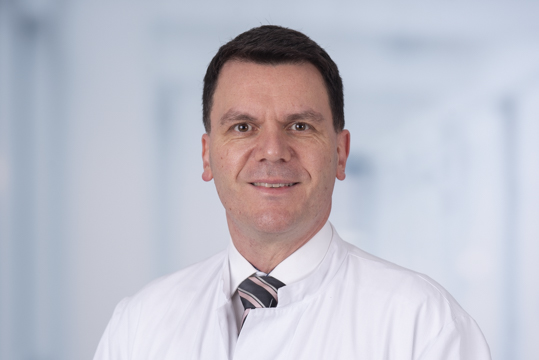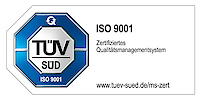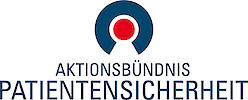AG Ach

Prof. Dr. med. Thomas Ach, MSc, FEBO
Research areas
Basic science
- High and super-resolution autofluorescence microscopy of the retinal pigment epithelium, including spectral analysis
Retinal pigment epithelium (RPE) cells contain different organelles (lipofuscin, melanolipofuscin, melanosomes and mitochondria) that impact clinical autofluorescence (AF) imaging and optical coherence tomography, or both. Using high-resolution structured illumination microscopy (SIM), we are studying RPE´s intracellular granule composition and granule´s spectral properties both in aging and retinal disease. Our data serve as a basis for validating in vivo RPE autofluorescence imaging.
Clinical science
Defining structural and functional endpoints in age-related macular degeneration, using multimodal imaging (e.g., autofluorescence imaging; optical coherence tomography) and histology-in vivo correlation
- Defining structural and functional endpoints in age-related macular degeneration, using multimodal imaging (e.g., autofluorescence imaging; optical coherence tomography) and histology-in vivo correlation
Autofluorescence of the human outer retina
Fundus autofluorescence imaging is a non-invasive imaging method to topographically map fluorophores of the retina, especially of the retinal pigment epithelium. Through deploying different excitation wavelengths (e.g. blue, green, near-infrared) different granules of the RPE (lipofuscin, melanolipofuscin, and melanosomes) can be targeted and mapped, in normal aging and in age-related macular degeneration. Results of distribution of organelles in the RPE cell body and apical processes will guide interpretation of clinical autofluorescence imaging.
Optical Coherence Tomography
Optical coherence tomography (OCT) is a noninvasive imaging technique that uses laser light to create depth resolved images. Our current focus is on structural endpoints for the early detection of progression (e.g., hyperreflective foci) in age-related macular degeneration. We also aim at better understanding the relationship of RPE´s reflectivity (OCT) and autofluorescent signal of the outer retina.
Two-color dark-adapted fundus controlled perimetry
Fundus-controlled perimetry (FCP) allows for spatially resolved testing of retinal sensitivity over the entire macula area. Through the use of two-color dark-adapted (DA,) FCP it is now possible to selectively probe rod and cone function. Our current focus is on spatially resolved correlation of structural endpoints (e.g., hyperreflective foci) and the corresponding retinal function.
- Structure-function correlation after macular hole surgery
- Detecting early biomarkers in chloroquine/hydroxychloroquine maculopathy
Chronic use of chloroquine and hydroxychloroquine(CQ/HCQ) can lead to severe ocular side effects including bull's-eye maculopathy (BEM). Our recent study using quantitative fundus autofluorescence (QAF) indicated increased QAF signal in patients using CQ/HCQ compared to control subjects. This increase was evident prior to impairments in functional tests and also prior to changes in other imaging modalities such as optical coherence tomography (OCT). Current research focuses on possible correlations of increased QAF signal during CQ/HCQ intake with the development of functional/structural impairments, and ultimately determine patients at risk for ocular complications
Special focus on novel retinal imaging technologies and automated image analysis
Quantitative Fundus-Autofluorescence, High-resolution optical coherence tomography (high-res OCT),
Retro Mode Imaging,
Machine learning applications
- Quantitative Fundus-Autofluorescence
Quantitative fundus autofluorescence (QAF) enables to accurately determine and compare autofluorescence levels between patients and imaging devices. Building on our previous work with this promising imaging technique, our current focuses are on improving QAF retest reliability, lesion specific autofluorescence levels, and enhancing QAF imaging through the use of convolutional neural networks.
- High-resolution optical coherence tomography (high-res OCT)
The High-Res OCT is an investigational device with an axial resolution of up to 3 µm that could enhance our understanding of retinal structures and vasculature. Our current focus is on validating this unique imaging device and comparing its accuracy to established systems.
- Retro Mode Imaging
Retro mode imaging takes advantage of retro-illuminated light. Currently, we are probing this relatively new imaging technique for monitoring subretinal and sub-RPE deposits in normal aging and in age-related macular degeneration.
- Machine learning applications
In collaboration with the Hasenauer group (University of Bonn) and Gerig Group (NYU Tandon School of Engineering), we are developing new artificial intelligence tools and applications for our above-mentioned projects. Specifically, we aim on deploying AI to enhance autofluorescence imaging (e.g., denoising algorithms, automatic detection of organelles relevant for autofluorescence imaging).
Qualifications:
1999 – 2005 Medical school (University of Halle, Germany, and University of Ulm, Germany)
2005 Final examination (Approbation), MD
2006 University Ulm, Germany: Doctoral thesis “Adjustable expression of the tetraspanine CD63 in breast cancer cells and determination of its
intracellular localization” (magna cum laude)
2007 – 2010 Additional accompanying study in Clinical research management (Wissenschaftliche Hochschule Lahr, Germany)
2010 Wissenschaftliche Hochschule, Lahr, Germany: Master thesis: “Off-label use and market authorization of drugs – an (im)possible
combination.“
2010 MSc. (Clinical research management)
2011 Fellow of the European Board of Ophthalmology (FEBO), German Board approval: Ophthalmology
2017 Habilitation (University of Würzburg, Germany): The human retinal pigment epithelium – aging effects versus changes in age-related
macular degeneration.
2021 Radiation safety specialist.
2021 Additional qualifying: Brachytherapy of the eye (Ärztekammer Nordrhein, Germany)
Prof. Dr. Thomas Ach, MD, FEBO, MSc (group leader)
Dr. Marlene Saßmannshausen, MD
Dr. Katharina Wall, MD
Dr. Leon von der Emde, MD
Dr. Anna Jauch, MD
Alessandra Carmichael Martins, MSc, PhD
Fabio Antonin
Aleksandr Gutnikov
Julia Esser
Lilith Arend
Guilia Ritter
Sebastian Stefan Fritsch
Ali Al Taweel














